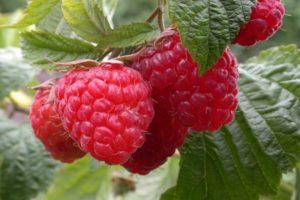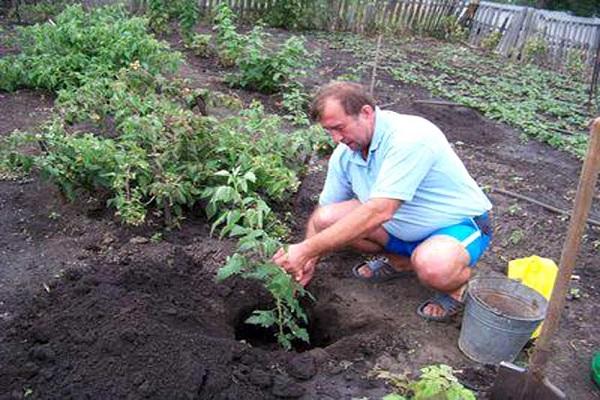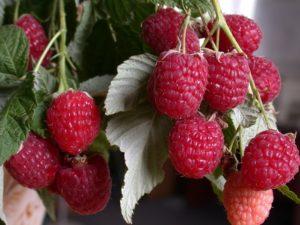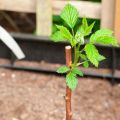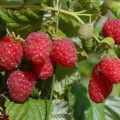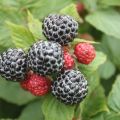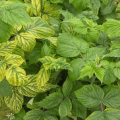When is it better to plant raspberries - in autumn or spring, what time frame to choose
Raspberries are a popular and beloved berry in any garden plot. It surprisingly, both fresh and processed, combines not only excellent taste, but also benefits. Surely, many were treated for colds with the help of raspberry jam. In this regard, we suggest that you find out when to plant raspberries - in autumn or spring, in order to get a good harvest.
What time can you plant raspberries
Some gardeners who have summer cottages are actively interested in what time they can plant raspberries. Next, let's try to figure out how raspberries planted at different times of the year will behave.
In the spring
For those who want to plant raspberries in the spring, it is better to do this from mid-April to early May. It would be nice to have time before the buds begin to open. It will also depend on the weather. So, for example, if in May there will already be hot weather without precipitation, planting should be postponed until autumn. Otherwise, the plant will have to provide constant watering so that it does not dry out.
Summer
Those who want to plant raspberries in the summer should do so at the end of the season, starting around the fifteenth of August until mid-September.
In autumn
A good time for planting in autumn is the period from mid-September to mid-October. Raspberries, planted on time, manage to rise and grow sufficiently strong by the winter cold. However, if it snows late, some of the less frost-resistant varieties will freeze.
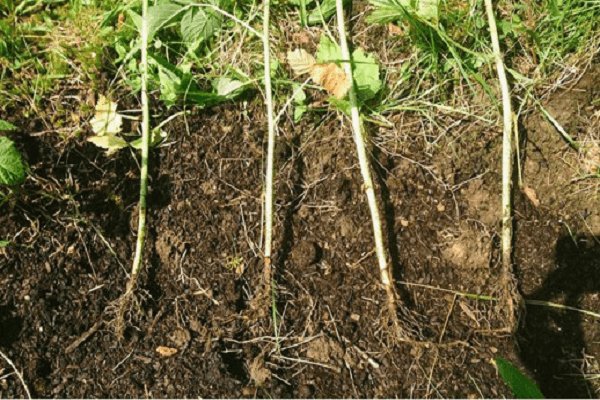
When is the best time to plant seedlings
Raspberries are a berry that can be planted at any time of the year, of course, with the exception of winter. However, experienced gardeners recommend doing this in the fall, since this period is characterized by the optimal combination of parameters such as air humidity and temperature.
Planting time versus growing region (table)
So, we figured out when is the best time to plan a raspberry planting, however, there are some peculiarities to consider. For example, in which autumn month it is better to do this, is in direct proportion to the region in which the planting takes place. Therefore, in order to understand when it is better to plant raspberries in the Moscow region, and when - in the Urals, we suggest considering the table.
| Region | Optimal planting time |
| Middle lane and Moscow region | Spring planting is allowed. Planting in autumn is preferred. |
| Ural | Planting should be done in the fall.The choice should fall on varieties that are highly resistant to cold, due to the frosty winters in the region. |
| Siberia | Planting is done in late summer or autumn. Young plantings must be insulated by winter. Planting on logs is recommended. Preference is given to varieties with high cold resistance. |
| Southern regions | The permissible time for disembarkation in the autumn is until the end of October. |
| Altai region | The best time to plant is the end of September or October. |
The best planting dates depending on the raspberry variety
Raspberry varieties are distinguished, which, in general, differ in taste. Some berries have a pronounced sourness, others stand out with a honey-sweet taste, and others are suitable only for blanks.
In this regard, the question arises - how to plant raspberries correctly so that they please the eye and stand out for their excellent taste.
Early
Early varieties do not differ in good fruitfulness, but it will be enough for personal needs.
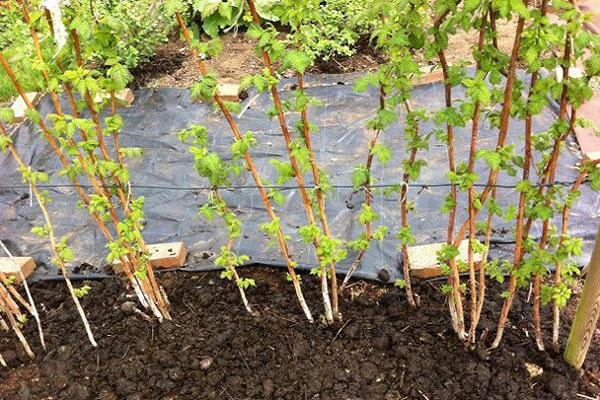
Medium ripening
It is better to grow this particular species on a personal plot, since it has a good yield. Also, raspberries of an average ripening period give their first fruits relatively early, are not so prone to diseases and do not need much painstaking care. Currently, there are approximately 90 varieties of such raspberries.
Late ripening
Late-ripening varieties are resistant to frost and abundant harvest. Today there are more than 200 varieties of late ripening raspberries, both regular and remontant.
Repaired
Repaired raspberries are the most popular among gardeners. She is quite capable of producing two crops. So, you will get the first harvest in June, and the second in September. This variety grows well in sunny places, loves warmth and open fertile ground.
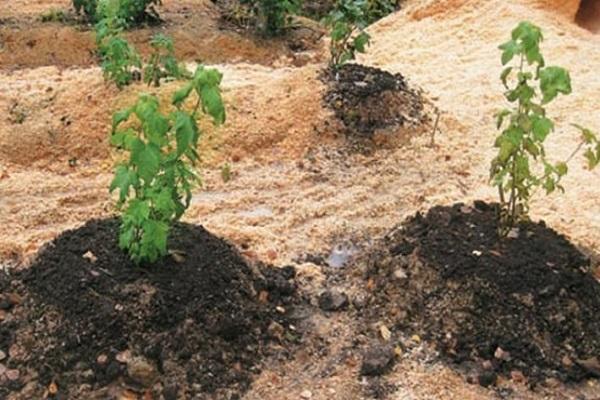
When to plant raspberry bushes
To understand whether it is necessary to plant raspberries, and when it is better to do it, it is worth understanding some of the features of this plant.
Raspberry roots give a large number of shoots, which, sooner or later, will lead to thickening, so this must be actively combated. So, if you saw that there are more than 10 shoots on one bush, the extra ones must be cut off, and this should be done right next to the ground.
As for the shoots from which the harvest has already been harvested, they are cut off at the root, leaving only young shoots. In this form, raspberries survive the winter, and in the new year you will get a sweet berry. Therefore, if you follow and prevent thickening of the culture, you will not need to plant the bushes.
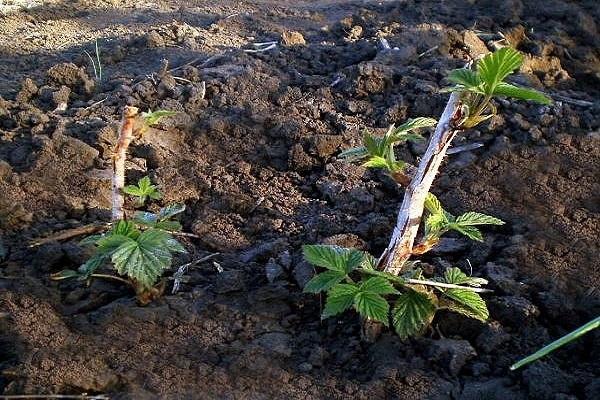
Neighborhood and crop rotation
Seedlings get along next to apple trees, pears, plums, but you should not plant them next to cherries. Also, berries grow poorly next to sea buckthorn, black currant, strawberries. It is not recommended to plant tomatoes or potatoes among raspberries.
Soil preparation
Before planning the planting of raspberries, you must first prepare the site directly. So, for this you need to do the following:
- The site is dug up with a shovel to a depth of about 30 centimeters.
- Weeds and unnecessary items (stones, boards, plastic bottles, etc.) are removed from the site.
- After the earth has been dug up, it must be leveled with a rake.
- Rhizomes and other plant residues are removed.
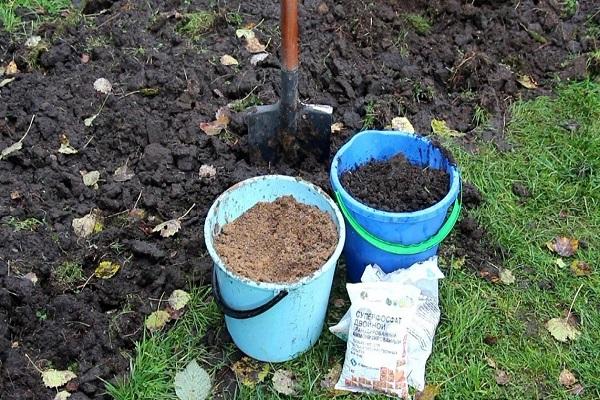
If raspberries are planted in the fall, the soil is prepared in a month and a half. Based on one square meter, you need to take from 10 to 30 kilograms of manure, from 60 to 80 grams of superphosphate, as well as 50 grams of potassium sulfate. If the soil is sandy or clayey on the site, more manure should be placed. Peat soil needs additional sanding.
If raspberries are planted in spring, before planting, the top layer of the earth is mixed with fertilizers, and the resulting soil is poured into the place where the crop will be planted.
Some time before planting the plant (about 2-3 weeks), holes are dug 50 by 40 centimeters in size, and in the process the upper layer of the earth is deposited separately from the lower one.
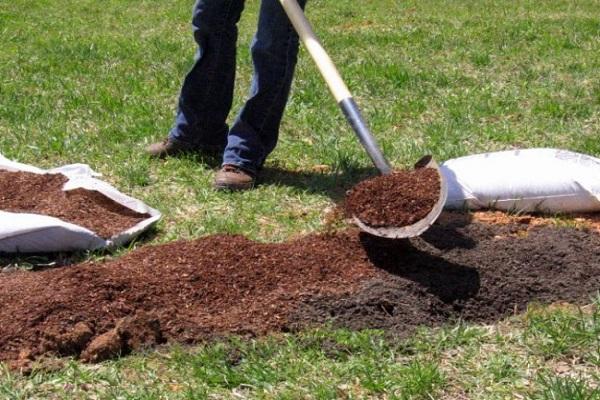
Sometimes it happens that the preparatory work could not be carried out, but there is a way out. So, in the places where raspberries are planted, you need to fill in a mixture consisting of compost, wood ash, granular superphosphate and potassium sulfate.
Disembarkation procedure
Having decided when it is better to plant raspberries, it is worth figuring out which methods of planting berries differ:
- Private.
- Kustovoy.
- In a container.
The simplest and most expedient is the ordinary method, which is widely used by the vast majority of gardeners. This option is divided into pit and trench. So, many gardeners refused to dig a hole for each seedling.
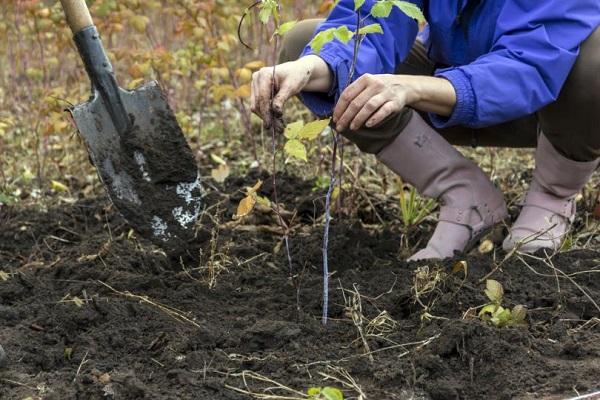
Of course, the trenching method is painstaking, but it is characterized by the best results when it comes to growing raspberries. The seedlings thus receive the required nutrients to the same extent each. The trenches are prepared several weeks before the planned planting; weeds are removed from the soil; markings are made on the site. Trenches are dug 50 centimeters deep and wide. Humus is placed at the bottom of each trench, which is sprinkled with double superphosphate and vermicompost.
In the event that there is fertile soil on the site, its top layer is placed on the bottom of the trench. Also, ordinary ash will help significantly improve the taste of berries.
Nevertheless, no less number of fans of growing berries on their own prefer the bush method. With the bush method, the plant is planted at a distance of 1.5 meters from each other.
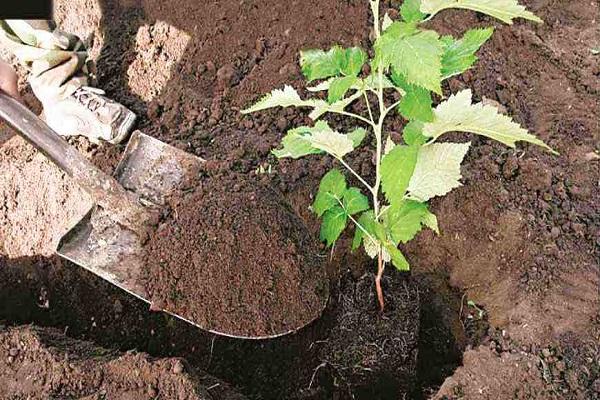
Sometimes the owners have a small garden plot at their disposal, but they still want to have raspberries in the garden. In this case, planting bushes in a container is useful. For these purposes, plastic or metal are suitable.
The size and diameter of such a container must be at least 50 centimeters. The bottom of the vessel is cut out, and it is dug into the hole. The container is filled with soil, to which rotted manure is added. By the way, this method makes it impossible for the growth of shoots, and the place nearby is used for planting other crops.
